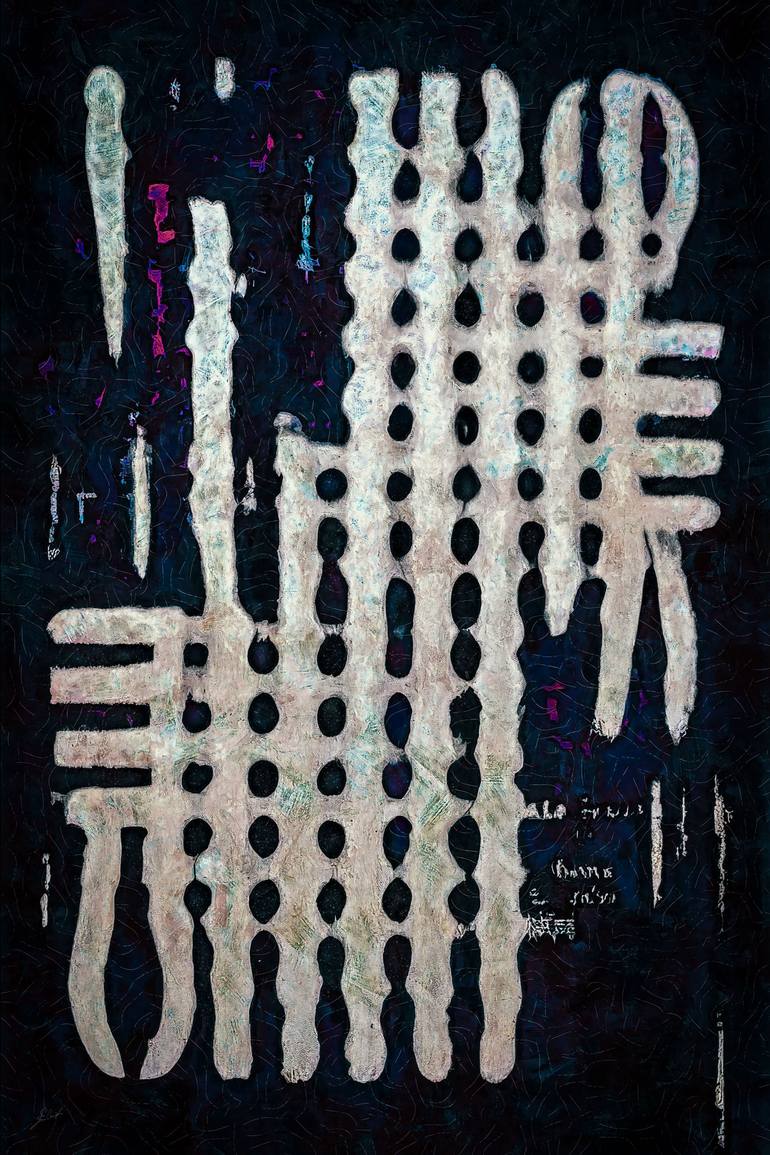





VIEW IN MY ROOM
Thickness Artwork
Turkey
Digital, Digital on Canvas
Size: 35.4 W x 53.1 H x 0 D in
Ships in a Tube
Shipping included
14-day satisfaction guarantee
Artist Recognition

Artist featured in a collection
About The Artwork
In graph theory, the thickness of a graph G is the minimum number of planar graphs into which the edges of G can be partitioned. That is, if there exists a collection of k planar graphs, all having the same set of vertices, such that the union of these planar graphs is G, then the thickness of G is at most k. In other words, the thickness of a graph is the minimum number of planar subgraphs whose union equals to graph G. Thus, a planar graph has thickness 1. Graphs of thickness 2 are called biplanar graphs. The concept of thickness originates in the Earth–Moon problem on the chromatic number of biplanar graphs, posed in 1959 by Gerhard Ringel, and on a related 1962 conjecture of Frank Harary: For any graph on 9 points, either itself or its complementary graph is non-planar. The problem is equivalent to determining whether the complete graph K9 is biplanar (it is not, and the conjecture is true). A comprehensive survey on the state of the arts of the topic as of 1998 was written by Petra Mutzel, Thomas Odenthal and Mark Scharbrodt.
Details & Dimensions
Digital:Digital on Canvas
Original:One-of-a-kind Artwork
Size:35.4 W x 53.1 H x 0 D in
Frame:Not Framed
Ready to Hang:No
Packaging:Ships Rolled in a Tube
Shipping & Returns
Delivery Time:Typically 5-7 business days for domestic shipments, 10-14 business days for international shipments.
Handling:Ships rolled in a tube. Artists are responsible for packaging and adhering to Saatchi Art’s packaging guidelines.
Ships From:Turkey.
Have additional questions?
Please visit our help section or contact us.
Turkey
Erkan has been always in movie sets since his childhood as the son of a Turkish Producer Nihat Cerit. When he was 10, he was trained about optical illusions effect done by mirrors. His life has changed once his father gave him a gift, it was a Commodore 64. One year after Commodore 64's world launch, a 12 year old boy, Erkan fell in love with computers. At home he developed simple computer games and computer programs by turning numeric formulas into visual images, in QBasic language. When he presented these to Teleteknik, (the representative of Commodore in Turkey), he became the youngest employee of Teleteknik at age 13. He wanted to learn more but there was no "master" or mentor about computers at that time so he had to work on his own. Erkan continued his education while working at Teleteknik , he was not spending too much time at school but was getting good grades. Doctors reported him as child with "High IQ." Unfortunately there was no special school for him and he was getting bored at school so he quit his education. He got graduated from High School at age 17 through a special exam. In 1986, he started working at Goldstar Turkey as freelance programmer. In 1988, he started working at Apple Computers Turkey and got trained on Desktop publishing, Computer Aided Design and Graphic Design. He developed several software programs during the years he worked at Apple TR. In 1991, he decided to focus on Industrial IT solutions including textile pattern design, computer aided manufacturing design, local & wide area network, NCR Corp., CNC programming and worked as sales representative for IBM. He developed neurosurgery & microsurgery video recording facility for Uludag University. In 1994, SGI, Silicon Graphics Inc. contacted Erkan and he became the Media Advisor for SGI and started preparing media coverage on Virtual Reality. When Telecine wanted to purchase SGI server, and they also asked Erkan to work with them. He got trained in 3 dimensional photo-realistic design and visualization by Telecine Corp & SGI. That's when he got interested in Stereoscopy. During these years he was also writing articles on technology for several major magazines and newspapers. In 1995, he attended a Naval Operations Practice directed by Turkish Army in a Frigate for 15 days as a technology reporter. That's when his journey with Stereoscopy began, after seeing through the stereoscopic viewfinder of a long-range heavy machine gun.
Artist Recognition

Artist featured by Saatchi Art in a collection
Thousands Of Five-Star Reviews
We deliver world-class customer service to all of our art buyers.
Global Selection
Explore an unparalleled artwork selection by artists from around the world.
Satisfaction Guaranteed
Our 14-day satisfaction guarantee allows you to buy with confidence.
Support An Artist With Every Purchase
We pay our artists more on every sale than other galleries.
Need More Help?